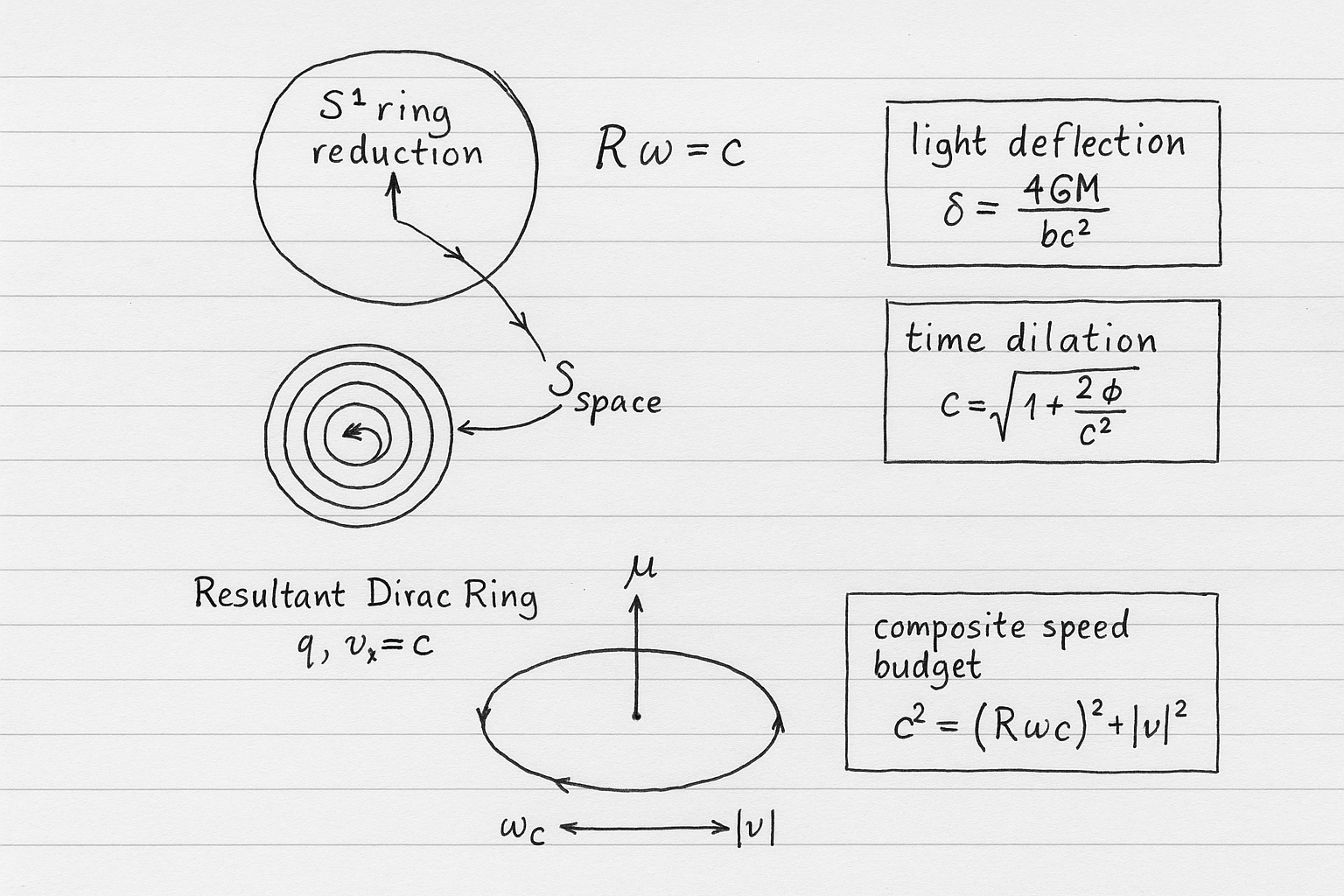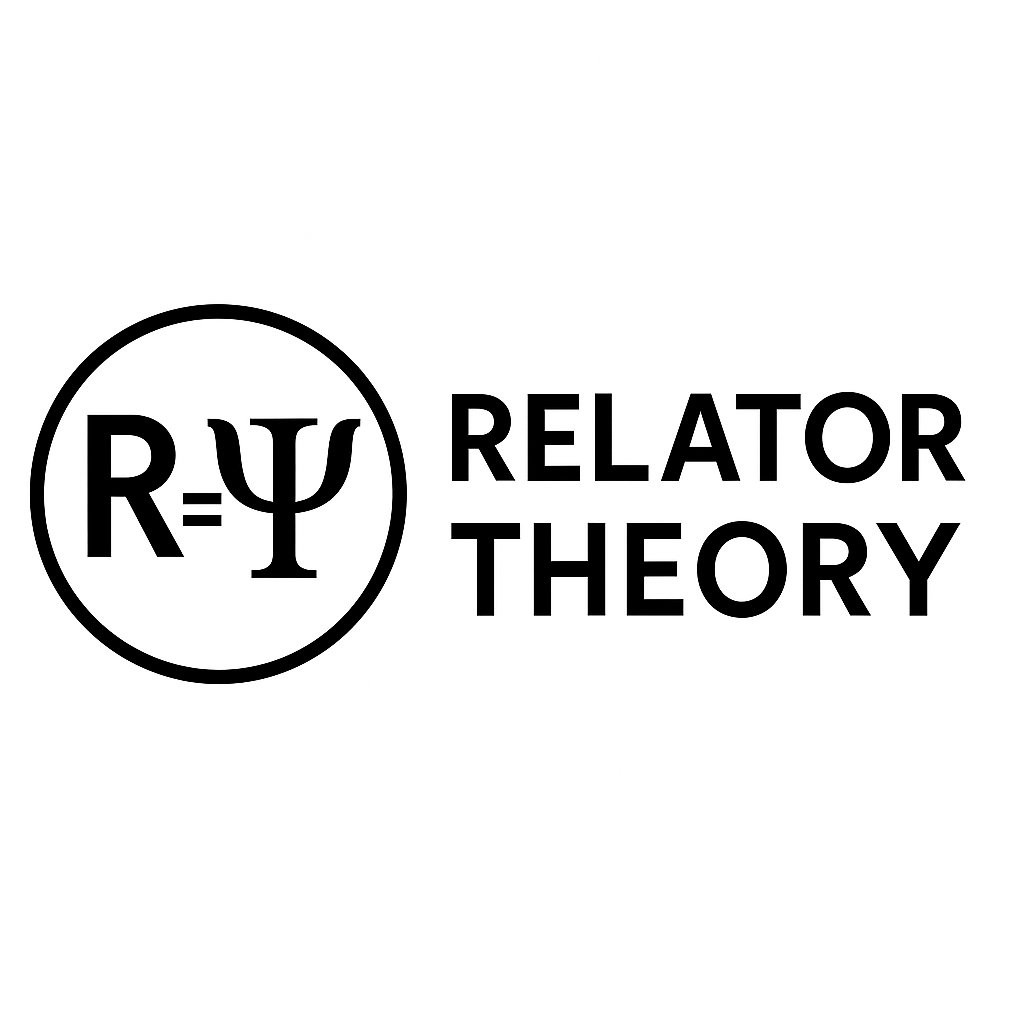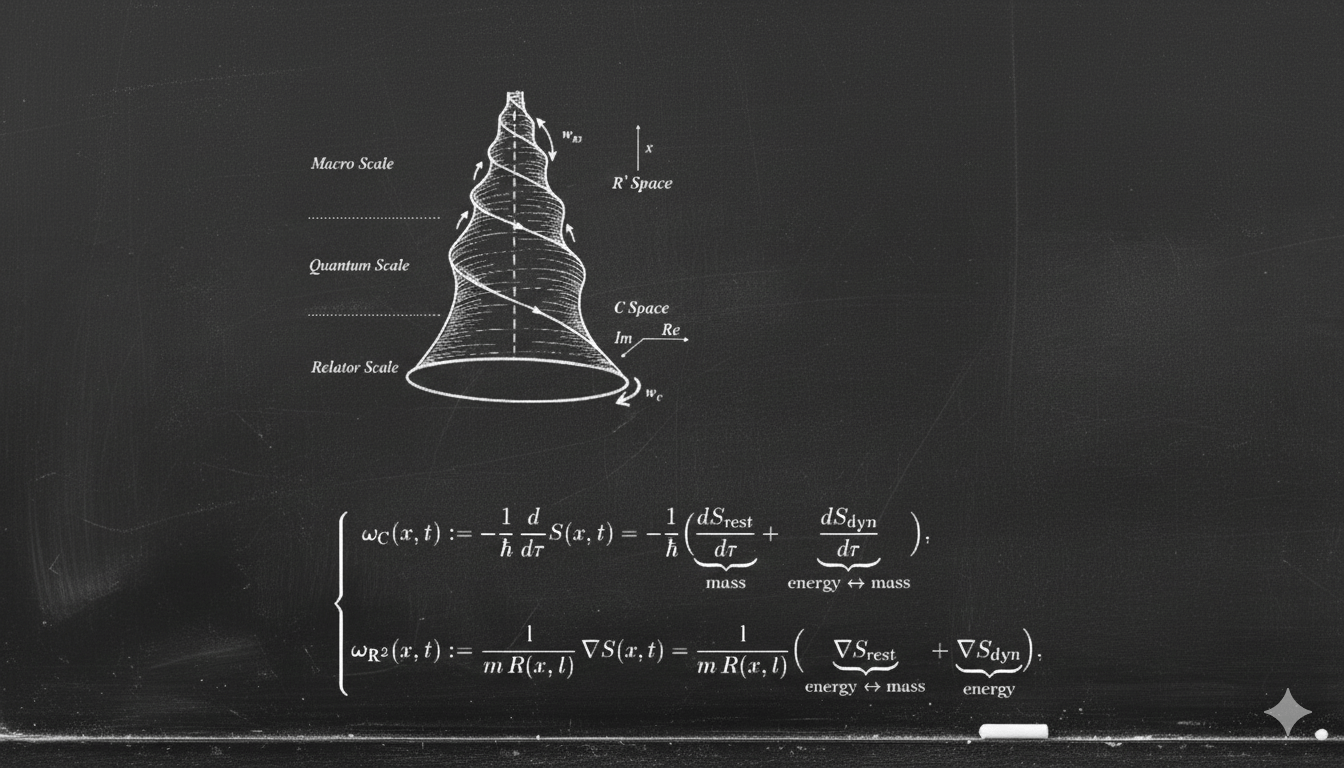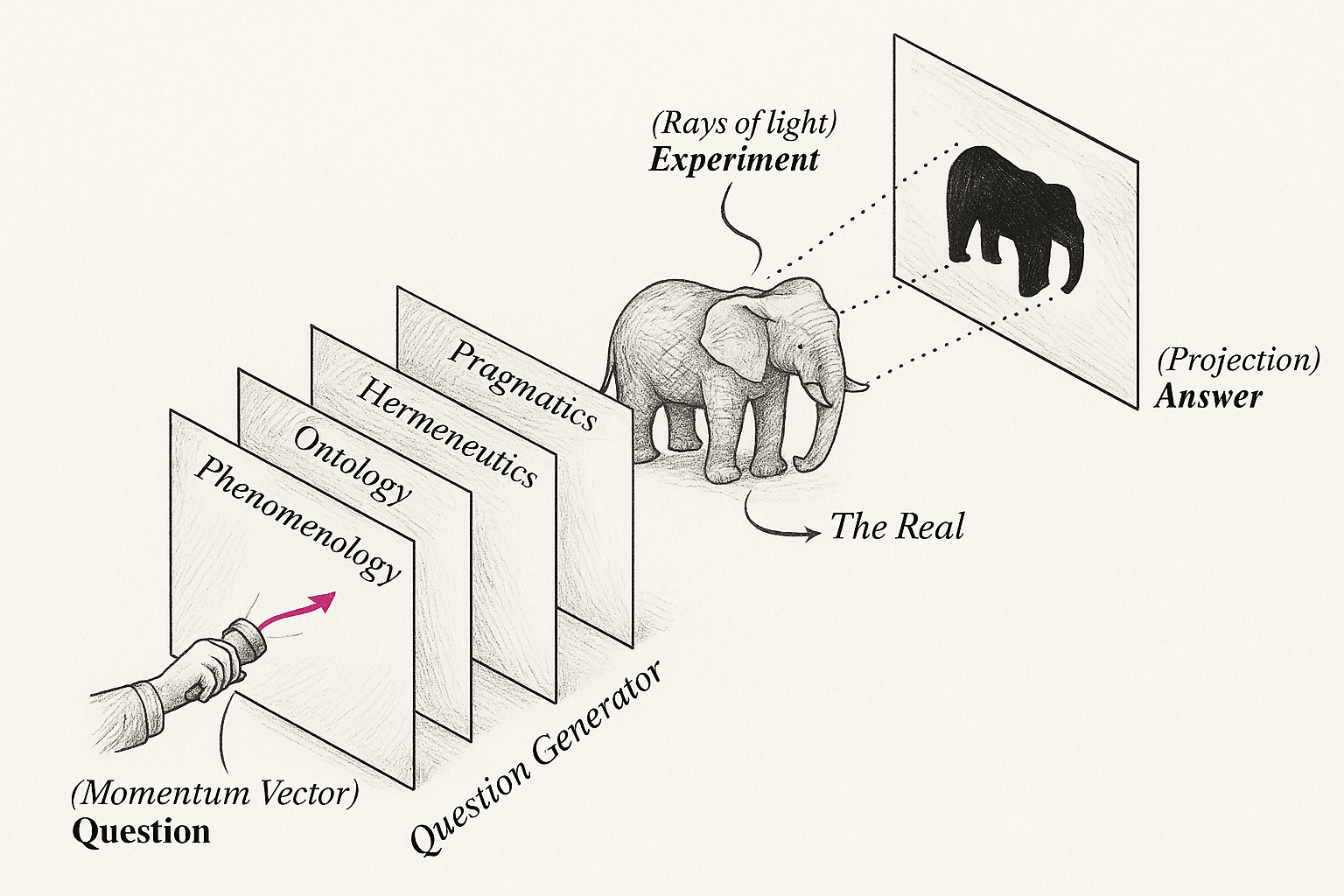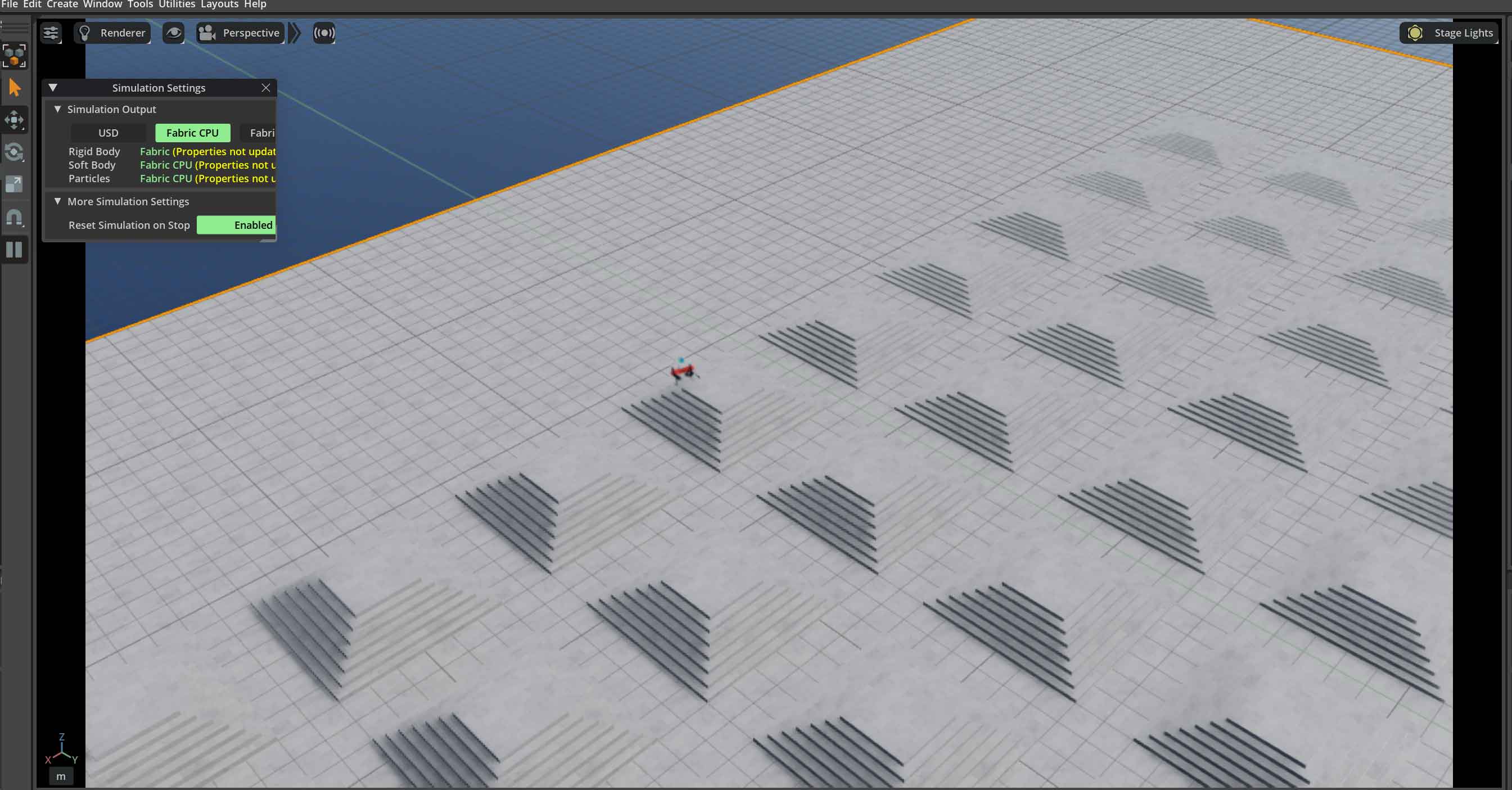Game Over Without Strings
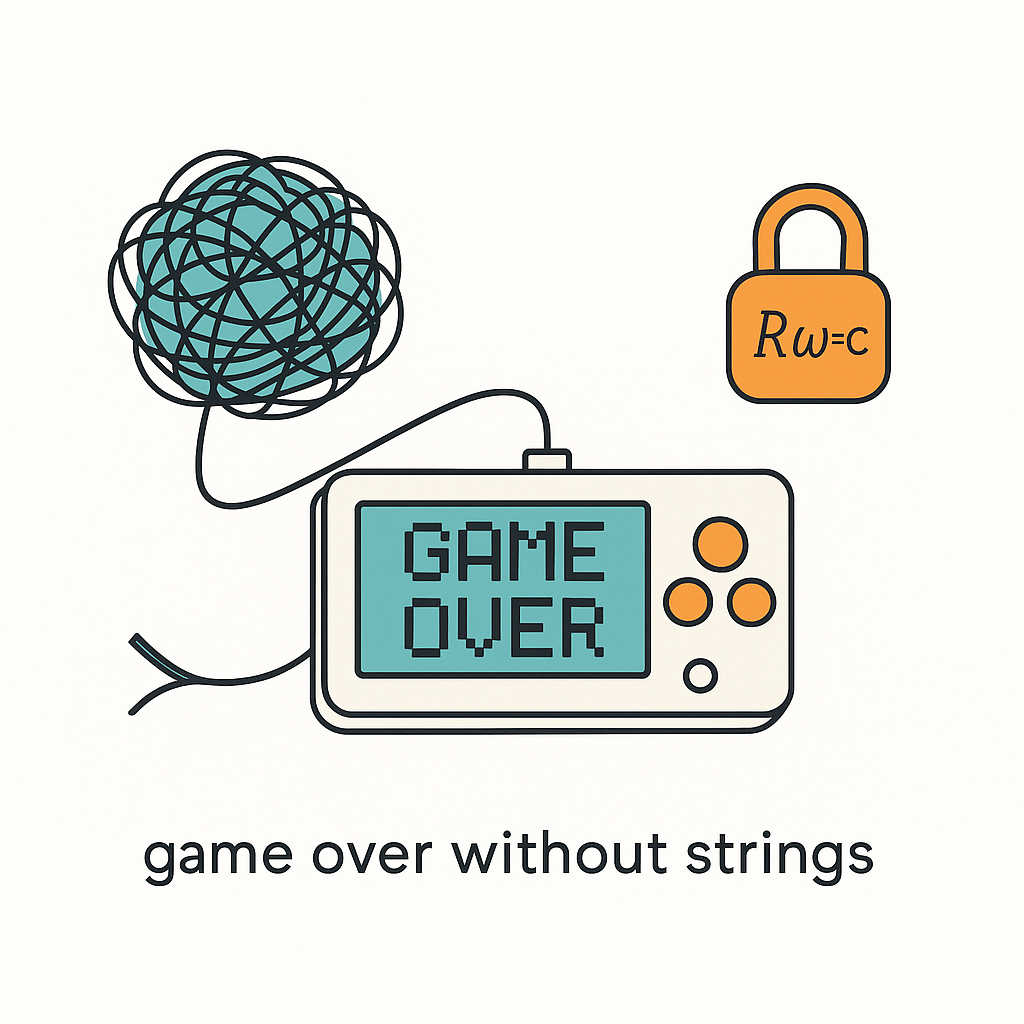
For years a popular challenge has floated around physics circles; the day a theory predicts fundamental particle masses from first principles, the game is over- Michio Kaku. String theory has not delivered that calculation. A far simpler framework does. Its core is a rigid, minimal constraint tying two coupled spaces together by a single lock Rω=c. From that lock, masses and constants fall out as resonances of modes—not from infinite superpositions dressed up as reality.
Why superposition misled us
Superposition entered as a solution method for the Schrödinger equation, expand in a Hilbert basis with infinitely many eigenvalues, normalize, compute. It works superbly as , just like Feynman diagrams. But elevating that mathematics to ontology created artifacts—dispersion stories, paradoxes, and a false split between quantum and classical. Treating the infinite expansion as real obscures a simpler picture in which physical systems occupy discrete, locked modes.
The minimal lock
The alternative is brutally simple. Couple a generator plane to ordinary space and enforce one geometric lock Rω=c. Do classical dynamics under that constraint and you recover the familiar “quantum–relativistic” structures without extra postulates or extra dimensions. Paths through a double slit become deterministic once the lock supplies the missing constraint. Entanglement appears as a shared internal frequency across the pair.
What actually falls out
From this locked two-space picture you can close problems that were supposed to be untouchable:
The electron mass emerges in two independent routes—one scalar, one vector—landing on the measured value within tiny tolerances, no tuned parameters.
The fine-structure constant appears as an emergent quantity of the same construction.
Even the effective gravitational constant can be obtained within tight bounds from the same minimal geometry.
None of these results require speculative landscapes, extra dimensions, or a tower of auxiliary hypotheses. They follow from one lock and finite resonant modes.

Whether the community accepts this tomorrow or in a hundred years is secondary. Ideas often get repackaged under new banners with more publicity. That does not change the content. The structure here is rigid, minimal, and—once seen—hard to unsee. If someone rediscovers it in another costume, history will still converge on the mechanism; a geometric lock that renders quantum behavior finite, deterministic in the right limit, and numerically predictive for real constants.
Make Your Business Online By The Best No—Code & No—Plugin Solution In The Market.
30 Day Money-Back Guarantee
Say goodbye to your low online sales rate!
